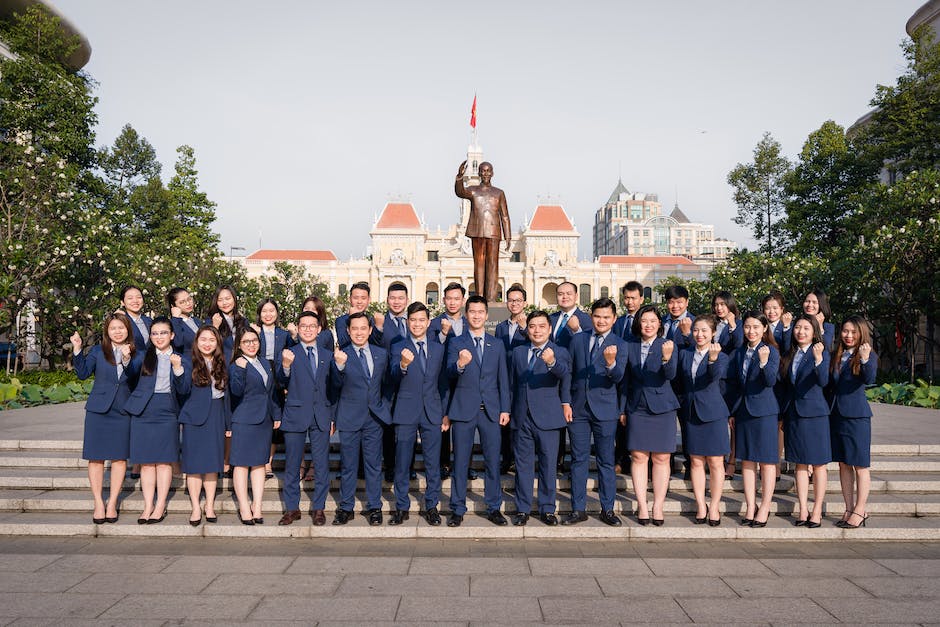Table of Contents
- Introduction
- The Role of Chief Operating Officer (COO) in Corporate Leadership
- Unveiling the Responsibilities of Chief Technology Officer (CTO) in Modern Organizations
- The Influence of Chief Marketing Officer (CMO) in Shaping Corporate Strategies
- The Vital Role of Chief Human Resources Officer (CHRO) in Building a Strong Organizational Culture
- Q&A
- Conclusion
Uncovering the Corporate Suite: An Exploration Beyond CEO and CFO – Revealing the Hidden Faces of Corporate Power.
Introduction
Uncovering the Corporate Suite: An Exploration Beyond CEO and CFO is a comprehensive study that delves into the various roles and positions within the corporate suite beyond the commonly known CEO (Chief Executive Officer) and CFO (Chief Financial Officer). This exploration aims to shed light on the diverse responsibilities and contributions of other key executives who play crucial roles in shaping the strategic direction and success of organizations. By examining these lesser-known positions, this study seeks to provide a deeper understanding of the complex dynamics and decision-making processes within the corporate suite.
The Role of Chief Operating Officer (COO) in Corporate Leadership

Uncovering the Corporate Suite: An Exploration Beyond CEO and CFO
The Role of Chief Operating Officer (COO) in Corporate Leadership
In the world of corporate leadership, the roles of the CEO and CFO are widely recognized and understood. However, there is another key player in the corporate suite whose role is equally important but often overlooked – the Chief Operating Officer (COO). The COO is responsible for overseeing the day-to-day operations of the company and ensuring that the organization runs smoothly and efficiently.
The role of the COO is multifaceted and requires a unique set of skills and qualities. One of the primary responsibilities of the COO is to develop and implement operational strategies that align with the company’s overall goals and objectives. This involves working closely with other members of the executive team to identify areas for improvement and develop plans to address them.
Transitional phrase: In addition to strategic planning, the COO is also responsible for managing the company’s resources and ensuring that they are allocated effectively. This includes overseeing the budgeting process, monitoring expenses, and making decisions about resource allocation. By effectively managing resources, the COO can help the company achieve its financial goals and maximize profitability.
Another important aspect of the COO’s role is overseeing the company’s day-to-day operations. This includes managing the various departments within the organization and ensuring that they are working together cohesively. The COO must have a deep understanding of the company’s operations and be able to identify areas where improvements can be made.
Transitional phrase: The COO also plays a crucial role in fostering a culture of collaboration and teamwork within the organization. By promoting open communication and encouraging employees to work together towards common goals, the COO can help create a positive and productive work environment.
In addition to their operational responsibilities, the COO also plays a key role in managing relationships with external stakeholders. This includes working closely with suppliers, customers, and other business partners to ensure that the company’s needs are met and that relationships are maintained.
Transitional phrase: The COO is often the face of the company in external meetings and negotiations, representing the organization’s interests and ensuring that agreements are fair and beneficial. This requires strong communication and negotiation skills, as well as the ability to build and maintain relationships.
Overall, the role of the COO is critical to the success of any organization. By overseeing the day-to-day operations, managing resources, fostering collaboration, and managing external relationships, the COO plays a vital role in ensuring that the company runs smoothly and efficiently.
Transitional phrase: While the roles of the CEO and CFO are often in the spotlight, it is important to recognize the important contributions of the COO in corporate leadership. Without their expertise and guidance, organizations would struggle to achieve their goals and objectives.
In conclusion, the role of the COO in corporate leadership is multifaceted and essential. From strategic planning to resource management, from fostering collaboration to managing external relationships, the COO plays a crucial role in ensuring the success of the organization. It is important for organizations and individuals alike to recognize and appreciate the contributions of the COO in the corporate suite.
Unveiling the Responsibilities of Chief Technology Officer (CTO) in Modern Organizations
Uncovering the Corporate Suite: An Exploration Beyond CEO and CFO
In today’s fast-paced and technology-driven world, the role of the Chief Technology Officer (CTO) has become increasingly important in modern organizations. While the CEO and CFO are often the most well-known and visible members of the corporate suite, the CTO plays a crucial role in shaping the technological landscape of a company. This article aims to unveil the responsibilities of the CTO and shed light on their significance in driving innovation and growth.
First and foremost, the CTO is responsible for developing and implementing the overall technology strategy of an organization. This involves identifying and evaluating emerging technologies that can enhance the company’s operations and competitive advantage. The CTO must stay abreast of the latest trends and advancements in technology, ensuring that the company remains at the forefront of innovation. By leveraging technology effectively, the CTO can help streamline processes, improve efficiency, and drive business growth.
Another key responsibility of the CTO is overseeing the development and maintenance of the company’s technological infrastructure. This includes managing the IT department, ensuring that the organization’s hardware, software, and networks are up to date and functioning smoothly. The CTO must also ensure the security of the company’s data and systems, protecting against cyber threats and ensuring compliance with relevant regulations. In an era where data breaches and cyber attacks are on the rise, the CTO’s role in safeguarding the company’s digital assets is of utmost importance.
Furthermore, the CTO plays a vital role in fostering innovation within the organization. By collaborating with other departments and stakeholders, the CTO can identify opportunities for technological advancements that can drive business growth. This involves working closely with research and development teams, as well as external partners and vendors, to explore new technologies and develop innovative solutions. The CTO must also encourage a culture of innovation within the company, promoting creativity and experimentation among employees.
Additionally, the CTO is responsible for managing the company’s technology budget and resources. This involves making strategic decisions regarding technology investments, ensuring that the company’s resources are allocated effectively. The CTO must balance the need for cutting-edge technology with the financial constraints of the organization, making informed decisions that align with the company’s goals and objectives. By optimizing the use of technology resources, the CTO can help drive cost savings and improve the company’s bottom line.
Lastly, the CTO serves as a bridge between the technical and business aspects of the organization. They must effectively communicate complex technological concepts to non-technical stakeholders, such as the CEO, board members, and investors. The CTO must articulate the value and potential impact of technology initiatives, helping others understand how technology can drive business success. By bridging this gap, the CTO can ensure that technology is integrated seamlessly into the company’s overall strategy and decision-making processes.
In conclusion, the role of the Chief Technology Officer (CTO) in modern organizations goes far beyond managing the IT department. The CTO is responsible for developing and implementing the company’s technology strategy, overseeing the technological infrastructure, fostering innovation, managing resources, and bridging the gap between technology and business. As technology continues to evolve and shape the business landscape, the CTO’s role will only become more critical in driving innovation, growth, and success.
The Influence of Chief Marketing Officer (CMO) in Shaping Corporate Strategies
Uncovering the Corporate Suite: An Exploration Beyond CEO and CFO
The Influence of Chief Marketing Officer (CMO) in Shaping Corporate Strategies
In the ever-evolving landscape of corporate leadership, the roles and responsibilities of executives have expanded beyond the traditional realms of the CEO and CFO. One such role that has gained significant prominence in recent years is that of the Chief Marketing Officer (CMO). The CMO, often regarded as the voice of the customer within an organization, plays a crucial role in shaping corporate strategies and driving business growth.
The CMO’s influence on corporate strategies stems from their deep understanding of the market and the customers. Unlike other C-suite executives who primarily focus on internal operations, the CMO is responsible for understanding customer needs, preferences, and behaviors. This customer-centric approach allows the CMO to provide valuable insights that shape the overall direction of the company.
One of the key areas where the CMO’s influence is felt is in the development of marketing strategies. The CMO is responsible for creating and implementing marketing plans that align with the company’s overall objectives. By leveraging their knowledge of the market and customer insights, the CMO can identify target segments, develop compelling value propositions, and design effective marketing campaigns. These strategies not only drive customer acquisition but also enhance brand loyalty and customer retention.
Furthermore, the CMO’s influence extends beyond marketing to other areas of the business. In today’s digital age, where customer experience is paramount, the CMO plays a vital role in shaping the overall customer journey. By collaborating with other departments such as sales, product development, and customer service, the CMO ensures a seamless and consistent experience across all touchpoints. This holistic approach to customer experience not only enhances customer satisfaction but also drives long-term business success.
Another area where the CMO’s influence is evident is in the realm of innovation. As the custodian of customer insights, the CMO is well-positioned to identify emerging trends and market opportunities. By leveraging these insights, the CMO can drive innovation within the organization, leading to the development of new products and services that meet customer needs. This ability to anticipate and respond to market changes is crucial in today’s fast-paced business environment.
Moreover, the CMO’s influence is not limited to internal stakeholders. In an increasingly interconnected world, the CMO plays a crucial role in building and maintaining relationships with external partners. Whether it is collaborating with advertising agencies, media outlets, or industry influencers, the CMO acts as the face of the company, representing its values and vision. These partnerships not only enhance brand visibility but also open doors to new business opportunities.
In conclusion, the role of the Chief Marketing Officer (CMO) has evolved significantly in recent years, with their influence extending beyond marketing to shape corporate strategies. By leveraging their deep understanding of the market and customer insights, the CMO plays a crucial role in developing marketing strategies, driving innovation, and enhancing the overall customer experience. Furthermore, the CMO’s ability to build and maintain external relationships further strengthens their impact on the organization. As businesses continue to navigate the complexities of the modern marketplace, the CMO’s role will only become more critical in shaping corporate strategies and driving business growth.
The Vital Role of Chief Human Resources Officer (CHRO) in Building a Strong Organizational Culture
Uncovering the Corporate Suite: An Exploration Beyond CEO and CFO
The Vital Role of Chief Human Resources Officer (CHRO) in Building a Strong Organizational Culture
In the corporate world, the roles of the CEO and CFO are widely recognized and understood. They are the faces of the company, responsible for its overall strategy and financial health. However, there is another key player in the corporate suite whose importance is often overlooked – the Chief Human Resources Officer (CHRO). The CHRO plays a vital role in building a strong organizational culture, which is crucial for the long-term success of any company.
One of the primary responsibilities of the CHRO is to attract and retain top talent. In today’s competitive job market, finding and keeping skilled employees is a constant challenge. The CHRO works closely with the CEO and other executives to develop strategies for recruiting and retaining the best people. This includes creating an attractive company culture, offering competitive compensation and benefits packages, and providing opportunities for professional growth and development.
Another important aspect of the CHRO’s role is fostering a positive work environment. A strong organizational culture is built on a foundation of trust, respect, and open communication. The CHRO works to create an inclusive and supportive workplace where employees feel valued and empowered. This involves implementing policies and programs that promote diversity and inclusion, as well as providing resources for employee well-being and work-life balance.
The CHRO also plays a critical role in aligning the company’s values and goals with its employees’ values and goals. By understanding the needs and aspirations of the workforce, the CHRO can help shape the company’s mission and vision in a way that resonates with employees. This alignment is essential for creating a sense of purpose and engagement among employees, which in turn leads to higher productivity and performance.
Furthermore, the CHRO is responsible for developing and implementing effective performance management systems. This includes setting clear expectations, providing regular feedback and coaching, and recognizing and rewarding high performers. By establishing a culture of accountability and continuous improvement, the CHRO helps drive individual and team success, ultimately contributing to the overall success of the organization.
In addition to these internal responsibilities, the CHRO also plays a crucial role in managing external relationships. This includes building partnerships with educational institutions, industry associations, and other organizations to attract top talent and stay abreast of industry trends. The CHRO also represents the company in labor negotiations and works to maintain positive relationships with unions and other employee representatives.
In conclusion, while the roles of the CEO and CFO are well-known, the Chief Human Resources Officer (CHRO) is a key player in the corporate suite whose importance should not be underestimated. The CHRO is responsible for attracting and retaining top talent, fostering a positive work environment, aligning the company’s values and goals with its employees’ values and goals, developing effective performance management systems, and managing external relationships. By fulfilling these responsibilities, the CHRO plays a vital role in building a strong organizational culture, which is essential for the long-term success of any company.
Q&A
1. What is “Uncovering the Corporate Suite: An Exploration Beyond CEO and CFO” about?
“Uncovering the Corporate Suite: An Exploration Beyond CEO and CFO” is a book or study that delves into roles and positions within a corporation beyond the traditional CEO (Chief Executive Officer) and CFO (Chief Financial Officer).
2. What is the purpose of “Uncovering the Corporate Suite: An Exploration Beyond CEO and CFO”?
The purpose of “Uncovering the Corporate Suite: An Exploration Beyond CEO and CFO” is to shed light on the various roles and positions within a corporate hierarchy that are often overlooked or less understood.
3. Who is the author of “Uncovering the Corporate Suite: An Exploration Beyond CEO and CFO”?
The author of “Uncovering the Corporate Suite: An Exploration Beyond CEO and CFO” is not specified in the question.
4. What can readers expect to learn from “Uncovering the Corporate Suite: An Exploration Beyond CEO and CFO”?
Readers can expect to gain insights into the diverse range of roles and responsibilities within a corporate structure, going beyond the commonly known CEO and CFO positions.
Conclusion
In conclusion, “Uncovering the Corporate Suite: An Exploration Beyond CEO and CFO” is a valuable exploration that goes beyond the traditional roles of CEO and CFO in understanding the dynamics of corporate leadership. By delving into other key positions within the corporate suite, this exploration provides insights into the diverse responsibilities and contributions of individuals in these roles. It highlights the importance of recognizing and appreciating the multifaceted nature of corporate leadership, ultimately contributing to a more comprehensive understanding of organizational success.




